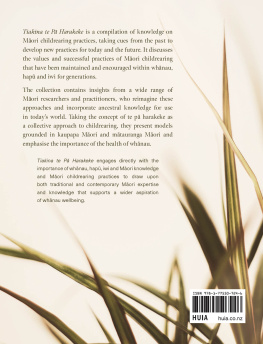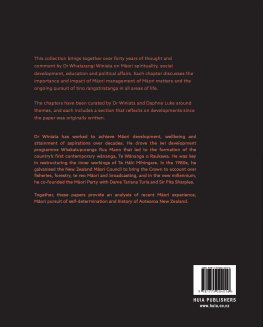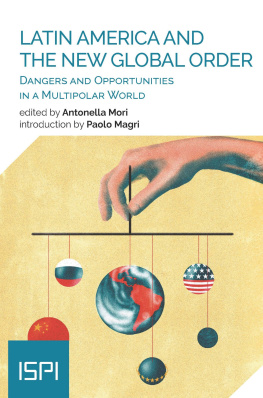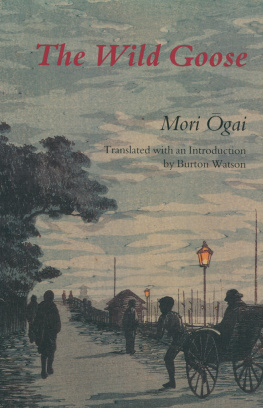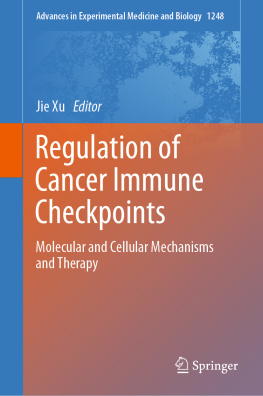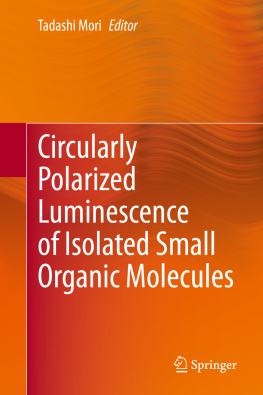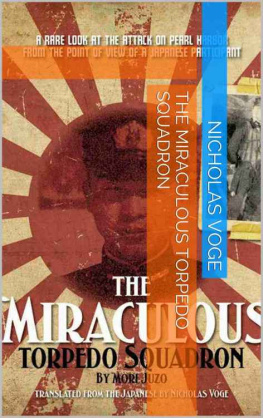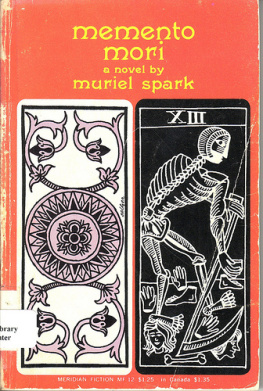
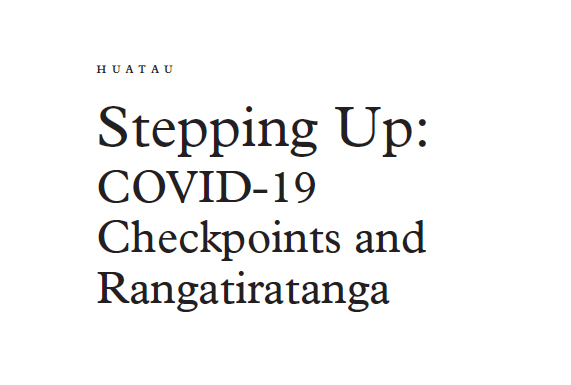

First published in 2021 by Huia Publishers
39 Pipitea Street, PO Box12280
Wellington, Aotearoa New Zealand
www.huia.co.nz
ISBN 978-1-77550-671-3 (print)
ISBN 978-1-77550-677-5 (ebook)
Copyright Luke Fitzmaurice and Maria Bargh 2021
Logo copyright Jacob Wilkins-Hodges 2021
This book is copyright. Apart from fair dealing for the purpose of private study, research,criticism or review, as permitted under the Copyright Act, no part may be reproduced by any process without theprior permission of the publisher.
A catalogue record for this book is available from the National Library of New Zealand.
The assistance of Ng Pae o te Mramatanga is gratefully acknowledged

Ebook conversion 2021 by meBooks
Contents
Stepping Up: COVID-19 Checkpoints and Rangatiratanga provides an insightful examination of practical expressions of rangatiratanga that is both grounded and deeply reflective. The roadside checkpoints that form the basis of the case studies in this book are striking examples of community-led responses to crisis. In each of these case studies, Mori communities took action to try to protect their people from the COVID-19 pandemic. The communities concerned did not wait for instructions, permission or resources from government but acted swiftly to keep their people safe.
While these checkpoints can be understood as the practical exercise of rangatiratanga, the central objective was not, of course, to demonstrate the autonomy of Mori communities. The checkpoints were a public health response, aimed at protecting health and wellbeing. The motivations for establishing the checkpoints are explored in this book and can be understood in the context of both the history and current circumstances of Mori health. Mori health professionals noted that the experience of Mori in previous pandemics provided a warning of the potential impact. The 1918 influenza pandemic saw a death rate for Mori that was seven times as high as the non-Mori death rate. Rates of hospitalisation and death in the 2009 influenza A (H1N1) pandemic were also much higher for Mori than for other ethnic groups. And today, disproportionate rates of chronic disease and other factors, such as poorer access to and quality of health care, significantly increase the risk of more serious health outcomes for Mori. As the case studies in this book demonstrate, it is that context that created the urgency to act, the obligation to step up and the need to provide leadership to protect the health of the community.
The exercise of rangatiratanga here is, therefore, inherently bound together with the rights and duties of kaitiakitanga and manaakitanga, including obligations to nurture, care for and protect others. The case studies show that the establishment of the checkpoints was an action that derived from and was driven by tikanga Mori. Concepts such as aroha and whnau feature prominently in the way in which participants describe their motivations and actions.
In this compelling and timely examination of these cases, Luke Fitzmaurice and Maria Bargh show us that not only were the obligations to act drawn from te ao Mori, but so too was the authority to act. Although the checkpoints in the case studies were organised in different ways, they all drew on authority sourced in their own communities. These were clear expressions of rangatiratanga. Significantly, this exercise of rangatiratanga also provided the foundation for opportunities to work collaboratively and productively with police and the authority of kwanatanga. In fact, in a report on human rights and Te Tiriti o Waitangi during the COVID-19 state of emergency, the Human Rights Commission identified these checkpoints as an example of Te Tiriti partnership working in practice.
The case studies explored in this book give us important insight into the ways in which Mori communities understand their rights and obligations of rangatiratanga and how that rangatiratanga can be given practical expression. Fitzmaurice and Bargh show how these checkpoints, born out of the extraordinary circumstances of a global pandemic, can help us to identify and address some of the challenges of giving effect to rangatiratanga in our constitutional arrangements. Importantly, this work encourages us to reflect on how these concrete examples of rangatiratanga, grounded in the practices of Mori communities, can provide us with conceptual tools to engage in a broader programme of constitutional transformation to ensure that rangatiratanga and Te Tiriti are at the heart of public policy and decision-making in Aotearoa.
Carwyn Jones
Te Wnanga o Raukawa
We would like to, first and foremost, thank the people and their whnau who were involved in the checkpoints. Your hard work, courage and determination kept communities safe. We also thank those who took the time to talk with us about their checkpoints. Thank you to Mihiata Pirini for peer reviewing the manuscript and insightful comments. Needless to say, any remaining errors or omissions are ours. To Carwyn Jones, whose work has informed much of our research and who kindly wrote the Foreword ng mihi ki a koe. Finally, to all our own whnau who inspire us on a daily basis thank you. Mauri oho, mauri t, mauri ora ki a koutou!
The arrival of COVID-19 in Aotearoa was momentous. Having watched the spread of COVID overseas, New Zealanders were faced with the reality that it had finally reached our shores. For many people, it was cause for panic. Most people were unsure how far the disease would spread, how deadly it would be and how long it would be before life returned to normal. Those unknowns were a huge source of anxiety for many New Zealanders.
For Mori, the arrival of COVID-19 was cause for action. All over the country, Mori took action to protect their communities. Across health, education and other social services, Mori began to respond to the threat that had reached our shores. Their responses were varied but were all aimed at keeping our people safe.
This book examines one of the most prominent examples of those responses, the roadside checkpoints that were established by Mori in many parts of the country. To the general public, the checkpoints were controversial at times, but they were ultimately successful in preventing the spread of COVID-19 into the areas in which they were established. Despite some initial tensions, the checkpoints also eventually came to be supported by the police.
This book is based on research undertaken in late 2020 on whether the checkpoints are a case study in the expression of rangatiratanga. Our research was guided by four questions:
What motivated iwi members to set up checkpoints in response to COVID-19?
On what authority were iwi checkpoints established?
What resources were required to maintain the checkpoints?
What can be learned from the iwi checkpoints, and how could those lessons be applied in future?
We found that in all four cases, checkpoint organisers were motivated by a desire to keep their people safe. All four checkpoints were different. Some were led by iwi or iwi collectives while others were hap or whnau-led. Some were a hard border with no-one allowed in or out, while others were more of a soft border with most people still allowed to travel through. At the same time, all four checkpoints had commonalities. The authority for the checkpoints was grounded in tikanga, not state law. All four were resource intensive, with the checkpoint often just one part of a wider COVID response programme. And all four were an example of Mori taking action on the basis of tikanga in order to serve their people.
Next page


